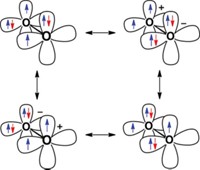Advertisement
Grab your lab coat. Let's get started
Welcome!
Welcome!
Create an account below to get 6 C&EN articles per month, receive newsletters and more - all free.
It seems this is your first time logging in online. Please enter the following information to continue.
As an ACS member you automatically get access to this site. All we need is few more details to create your reading experience.
Not you? Sign in with a different account.
Not you? Sign in with a different account.
ERROR 1
ERROR 1
ERROR 2
ERROR 2
ERROR 2
ERROR 2
ERROR 2
Password and Confirm password must match.
If you have an ACS member number, please enter it here so we can link this account to your membership. (optional)
ERROR 2
ACS values your privacy. By submitting your information, you are gaining access to C&EN and subscribing to our weekly newsletter. We use the information you provide to make your reading experience better, and we will never sell your data to third party members.
Synthesis
Unlikely Cold Fusion
July 9, 2012
| A version of this story appeared in
Volume 90, Issue 28
The following relates to Stephen Ritter’s article on cold fusion (C&EN, May 14, page 42). The “cold fusion” hypothesis, launched in 1989 by Stanley Pons and Martin Fleischmann—two electrochemists who detected excess heat when exposing deuterium to a palladium catalyst—was at that time rapidly debunked by the established physics community, who could not find any of the typical traces of nuclear fusion in the Pons and Fleischmann setup. Now the Italian engineer Andrea Rossi pretends to have found cold fusion reactions between hydrogen and nickel atoms in a particular catalyst, as concluded from excess heat displayed by his setup.
Chemists should bear in mind that spontaneous nuclear fusion reactions must, in addition, be exothermic; produce at least two particles (to carry away the fusion energy as kinetic particle energy, preserving total momentum); have a small activation energy, which requires two reacting nuclei of low nuclear charge; and conserve both protons and neutrons of the reacting nuclei, because the cross sections for the weak interaction (proton-to-neutron conversion or vice versa) are far too small to result in substantial conversion.
Chemists should further bear in mind that the energy given off in a nuclear fusion event is in the megaelectron volt (MeV) range, about a million times the energy given off in a chemical reaction event, which is merely in the electron volt range. Particles having kinetic energy in the MeV range necessarily disrupt the structure of matter and thereby produce a large amount of X-radiation, in addition to the nuclear radiation produced in the reaction event itself. Hence, nuclear fusion events are in any case easily detected with the help of an X-ray or gamma counter (Geiger tube).
The excess heat observed by Rossi in his nickel-hydrogen catalyst reaction setup is thus more likely to be due to the combination of hydrogen with oxygen from nickel oxide, to form water (the reaction exploited in commercial NiMH cells), than to the fusion of hydrogen and nickel atomic nuclei. The latter reaction would have an activation energy on the order of more than 4 MeV, and the excess heat reported by Rossi would have produced such a quantity of associated radioactivity that he would no longer be alive.
By Edgar Müller
Prilly, Switzerland
The article on cold fusion tweaked my interest, as I have published four papers on cold fusion (CF) that present a clear, nonnuclear explanation for the Fleischmann and Pons observations. What has been most interesting has been its reception by the CF community.
Usually, when a scientific proposition is criticized, an enthusiastic debate over its merits is expected. The end state of that should be one of three options: 1. The proposition (or criticism) is found to be wanting, 2. the proposition is found to be accurate, or 3. insufficient evidence is available to decide. Option 3 is a frequent result and is the situation in this case. Though my conventional proposal has some analytic support and predictive capability, no research has been done to prove conclusively that it’s true. Thus more research is indicated, but it must be tailored toward obtaining 1 or 2.
Instead, the CF community has embarked on a campaign to simply denigrate and ignore the proposal. They construct a “straw man” version, “prove” that it is wrong (as expected), and then ignore the explanation. Perhaps the clearest evidence of this is their 2010 publication in the Journal of Environmental Monitoring (DOI: 10.1039/C0EM00267D) where they “rebut” the “random Shanahan CCSH.” However, in all four of my publications, the hypothesized effect is described as systematic. It is nearly impossible to believe that the 10 CF authors writing the rebuttal do not know the difference between systematic and random error. Yet they continue to support this contention as evidenced on the webpages of MIT professor Peter Hagelstein (www.rle.mit.edu/media/pr152/48_PR152.pdf).
Critical review is at the heart of scientific progress. When a critic posits an alternative explanation, the appropriate response should not be to misconstrue the criticism and then ignore it. The consistent use of this tactic is the clearest sign that CF researchers are in fact pseudoscientists, pantomiming the behavior of good scientists.
Rossi’s unwillingness to conduct adequate scientific exploration of his “E-Cat” is likewise a dead giveaway that all is not right in Bologna. The proffered demonstrations and explanations leave the viewer completely unsure if what is being assumed by Rossi does in fact occur. Until such ambiguity is removed, readers should remain cautious, especially given that Rossi favors a “low-energy nuclear reaction (LENR)” or “CF” explanation for his results. Hopefully, CF is really not being “revived,” as it was and is an excellent example of junk science.
By Kirk L. Shanahan
Aiken, S.C.



Join the conversation
Contact the reporter
Submit a Letter to the Editor for publication
Engage with us on Twitter